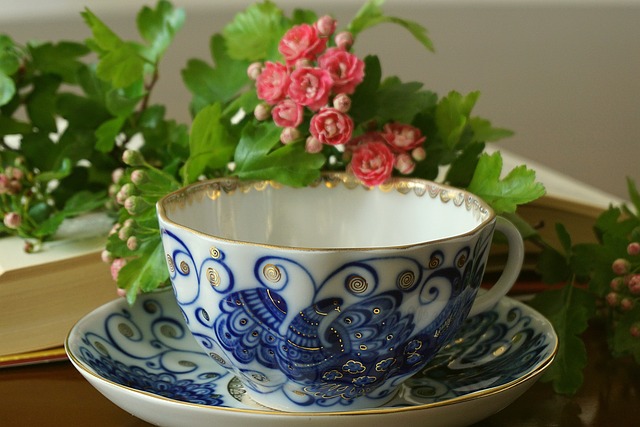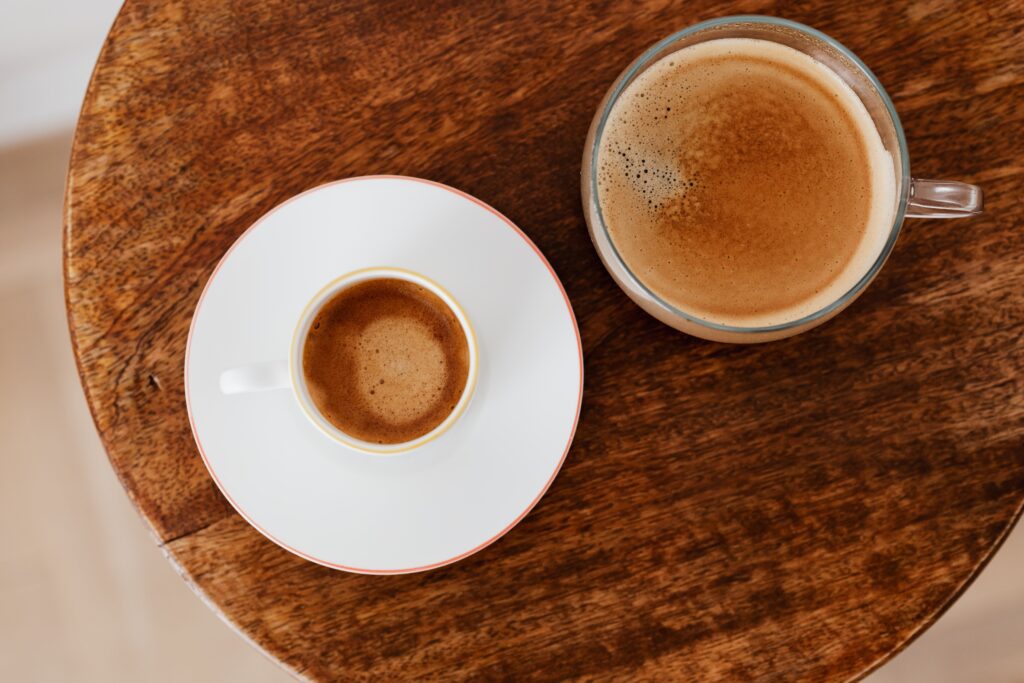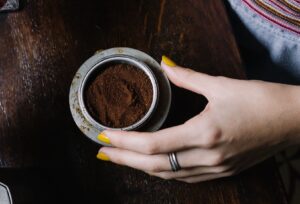Have you ever wondered if the material of your coffee storage influences its taste? You’d be surprised by the difference a ceramic canister or a metal tin could make to your morning brew.
These days, a plethora of options are available when it comes to the material of jars for storing coffee. You can find jars made out of glass, stainless steel, copper, aluminum, plastic and wood. While materials like glass are inert and do not really impact the stored coffee, materials like wood and plastic may. Since coffee remains in contact with these materials for at least weeks, if not months, the taste may be impacted. Not only coffee acquires smell and properties from the material, but the jars also start to smell of coffee. Therefore, your experience and taste of coffee is impacted based on the storage container.
In our exploration of “Do Different Materials Affect the Flavor of Coffee?” we’ll delve into the science behind coffee storage and its effect on the beloved bean’s flavor profile.
So, whether you’re a casual drinker or a coffee connoisseur, get ready to discover how to store your coffee to achieve the perfect cup every time. Dive in and embrace the taste adventure!
Do different materials affect the flavor of coffee?
The answer is a resounding yes. Different materials can indeed affect the flavor of coffee in various ways, due to their interaction with the volatile compounds in the coffee beans or grounds. These compounds are responsible for coffee’s distinctive taste and aroma, and their preservation is key to maintaining coffee’s flavor.
- Glass or Ceramic Containers: Glass and ceramic are popular choices for coffee storage because they are non-reactive materials. This means they don’t interact with the coffee at a chemical level and therefore don’t alter its flavor. They are often recommended for coffee storage because they can effectively preserve the coffee’s flavor if they have an airtight seal. However, if these containers are clear or translucent, they should be stored in a dark, cool location to prevent exposure to light, which can degrade the coffee beans and cause flavor loss over time.
- Metal Containers: Stainless steel containers are also commonly used for coffee storage. They are non-reactive and don’t impart any flavor into the coffee. However, other types of metal, such as tin, could potentially react with the volatile compounds in the coffee, especially if the metal is not properly treated or if the interior of the container is scratched, leading to possible flavor alterations.
- Plastic Containers: Plastic containers are a mixed bag. While some high-quality plastics are designed to be non-reactive, many can potentially leach compounds into the coffee, especially if exposed to heat. This could change the flavor profile of the coffee over time.
- Wooden Containers: Wooden containers, while aesthetic, can also impart a woody flavor into the coffee. The porous nature of wood can also absorb the coffee oils and odors, which might transfer to the next batch of coffee stored in the container.
In conclusion, the material of your coffee storage does matter. While glass, ceramic, and stainless steel are usually safe bets, it’s always worth considering the potential interactions between your coffee and its storage container.
The perfect cup of coffee begins with the right beans, the right brewing method, and importantly, the right storage. After all, great coffee isn’t just made—it’s preserved.
Can I store coffee in a plastic bag?
While you technically can store coffee in a plastic bag, it’s generally not the best option for maintaining optimal flavor and freshness.
Coffee beans and grounds contain volatile oils that are sensitive to air, light, moisture, and heat.
- A plastic bag, especially if it’s not designed specifically for coffee storage, may not provide an airtight seal, which can expose your coffee to oxygen, leading to stale, flavorless coffee over time.
- Another potential issue is that many plastics can absorb and release odors, which can affect the flavor of your coffee. If the plastic bag has been exposed to heat, certain types of plastic might also release undesirable chemicals that could leach into your coffee.
If you need to use a plastic bag temporarily (say, you’ve purchased coffee while traveling and need a way to transport it), look for high-quality, food-grade bags that can be sealed tightly.
Also, make sure to keep the coffee away from heat and light as much as possible.
For long-term storage, though, consider investing in a good-quality, airtight container made from glass, ceramic, or stainless steel.
These materials are non-reactive and won’t interact with the coffee’s flavor or aroma. And remember, the best way to enjoy coffee is to buy in small quantities and grind just before brewing, ensuring that you’re always drinking the freshest coffee possible.
Is stainless steel OK for coffee?
Yes, stainless steel is a good choice for storing coffee. Stainless steel is non-reactive and does not absorb the flavors and aromas of the coffee, which means it won’t alter the taste of your coffee over time.
Stainless steel containers are also durable and often come with airtight seals, which help to keep your coffee fresh by preventing exposure to air, light, moisture, and heat—all of which can degrade coffee’s flavor.
However, when using a stainless steel container, there are a few things to keep in mind:
- Keep it clean: Regularly clean your container to remove any old coffee oil residues that can become rancid over time and affect the flavor of your new coffee.
- Avoid flavored coffees: If you use your container to store flavored coffees, the strong aromas can linger and potentially taint any non-flavored coffees you store afterwards.
- Keep it airtight and cool: Ensure that the container is sealed properly after each use and stored in a cool, dark place. Even though the container itself is opaque and durable, changes in temperature can still affect the freshness of your coffee.
In conclusion, stainless steel is a practical and effective choice for coffee storage, as long as it’s used correctly. Its non-reactive nature and durability make it a favorite among coffee enthusiasts.
Is glass or ceramic better for coffee?
Both glass and ceramic containers can be excellent choices for storing coffee, as they’re both non-reactive materials. This means they don’t chemically interact with the coffee, ensuring that the coffee’s flavors and aromas remain intact.
However, there are a few differences between the two that might make one more appealing to you than the other:
Glass Containers
Pros:
- Glass containers allow you to see how much coffee you have left at a glance, which can be convenient.
- They’re generally easier to clean than ceramic containers, as they’re less likely to stain and can often be put in the dishwasher.
Cons:
- Glass is sensitive to light. If your container is clear, light can degrade the coffee beans, affecting their flavor. This means you should store the container in a dark, cool place.
- Glass is also more fragile than ceramic, so it might not be the best choice if you’re prone to dropping things.
Ceramic Containers
Pros:
- Ceramic containers are often opaque, protecting your coffee from light without needing to be stored in a dark place.
- They’re more durable than glass, so they’re less likely to break if accidentally dropped.
- Ceramic containers can come in a variety of beautiful designs, adding aesthetic value to your kitchen.
Cons:
- Ceramic is more porous than glass. If the container is not properly glazed, it could potentially absorb some of the coffee oils, which might affect the flavor of different coffee types stored afterwards.
- Ceramic containers might be more difficult to clean than glass ones, especially if they’re intricately designed or have a narrow opening.
In the end, whether you choose glass or ceramic mainly comes down to personal preference and lifestyle considerations. Both can serve as good storage options as long as they have a good seal to prevent exposure to air, which can cause the coffee to oxidize and lose flavor.
Are mason jars good for storing coffee?
Yes, Mason jars can be an effective option for storing coffee, particularly if they have airtight lids. These jars, originally designed for home canning, have a two-part lid system consisting of a flat disk with a rubber ring (the “lid”) and a separate metal band (the “ring”) that screws down to create an airtight seal.
This can help to keep your coffee fresh by preventing exposure to air, light, and moisture—all factors that can degrade coffee’s flavor over time.
Here are a few benefits of using Mason jars for storing coffee:
- Airtight Seal: As mentioned above, Mason jars can form an airtight seal which helps to keep your coffee fresh.
- Durability: Mason jars are typically made of thick, tempered glass, making them relatively durable.
- Non-reactive Material: Glass is a non-reactive material, meaning it won’t chemically interact with your coffee and alter its flavor.
- Visibility: The transparency of the jar allows you to easily see how much coffee you have left.
However, there are also a few things to keep in mind when using Mason jars:
- Light Exposure: Coffee beans are sensitive to light, which can degrade them and affect their flavor. Since Mason jars are clear, you should store them in a cool, dark place to protect your coffee.
- Size: Mason jars come in a variety of sizes, but it’s important not to store more coffee than you can consume in a week or two. Coffee begins to lose flavor soon after it’s roasted, and once the jar is opened, the exposure to air will accelerate this process.
- Sealing: Ensure the seal is intact and functioning properly every time you close the jar. If the rubber seal on the lid becomes damaged or worn out, it can be replaced.
In conclusion, Mason jars can be a good, cost-effective option for storing coffee, especially if you take care to protect the coffee from light and ensure the jar is properly sealed.

Why does coffee taste better in porcelain than a ceramic mug?
Both porcelain and ceramic mugs are popular choices for coffee lovers, and the material of your mug can subtly influence the taste and experience of your coffee. Here are some reasons why some people may prefer porcelain over ceramic:
- Heat Retention: Porcelain is denser and has a finer grain than most ceramics, which means it can retain heat better. This keeps your coffee warmer for longer, which can enhance the flavor as you drink it.
- Smoothness: The surface of a porcelain mug is typically smoother than that of a ceramic one. A smooth surface can make the coffee seem less bitter as it reduces the contact between the coffee and your taste buds.
- Thickness: Porcelain mugs are often thinner than ceramic mugs. This thinness can affect the way the coffee cools in your mouth and the way it flows over your tongue, which can alter your perception of its flavor.
- Aesthetic and Perception: The aesthetics of a cup and the experience of drinking from it can subtly influence our perception of flavor. Porcelain, being often associated with high-quality and delicate tableware, might make the coffee-drinking experience feel more luxurious or refined, thereby indirectly enhancing the perceived flavor of the coffee.
Remember, individual preferences can vary greatly, and the perfect coffee mug is often a matter of personal choice. Whether it’s porcelain or ceramic, the most important thing is that you enjoy your coffee.
What material does coffee taste best in?
The material of your coffee cup can subtly influence the taste of your coffee. However, determining which material is the “best” is somewhat subjective, as it depends largely on individual preference. That being said, here are some common materials used for coffee cups and how they might influence the coffee’s flavor:
- Porcelain and Bone China: Both materials have fine grains and retain heat well, keeping your coffee hot longer. The smooth surface and often thin wall can also affect the way the coffee flows onto your tongue, potentially enhancing flavor perception. These materials are often associated with high-quality tableware, which can also enhance the overall drinking experience.
- Glass: Glass is non-reactive and won’t alter the flavor of your coffee. It also allows you to see the color of your coffee, which can enhance your perception of its taste. However, glass doesn’t retain heat as well as some other materials, so your coffee may cool down quicker.
- Stoneware and Ceramic: These materials are good insulators, helping keep your coffee hot. They’re also sturdy and durable. However, they may not enhance the flavor perception as well as finer materials like porcelain.
- Stainless Steel: Stainless steel is durable and retains heat well, but some people feel it slightly alters the taste of coffee, giving it a metallic hint. Others, however, do not notice any flavor difference when using stainless steel.
- Plastic: While convenient for on-the-go situations, plastic cups can potentially interact with the coffee and alter its taste. They also don’t retain heat as well as other materials.
In conclusion, the “best” material can vary depending on personal preference, context, and what characteristics you value most in your coffee drinking experience (e.g., taste, temperature, aesthetic, durability). The best way to determine your preference might be to try drinking coffee from different types of cups and see which one you like best.
Conclusion
The journey from coffee bean to cup is intricate, with every detail, including storage material and serving cup, significantly impacting the overall flavor. Whether it’s glass, ceramic, metal, or porcelain, each material offers unique contributions to your coffee experience.
However, the ‘best’ choice is highly subjective, resting on personal preference and lifestyle. As coffee lovers, our pursuit for the perfect brew continues, each cup a discovery. Understanding these nuances enhances our appreciation for this complex world of coffee. Cheers to the many discoveries ahead!





